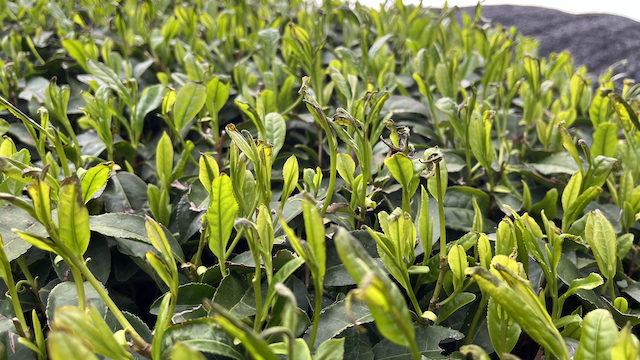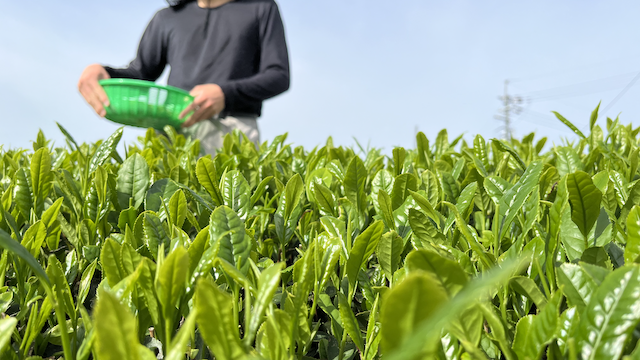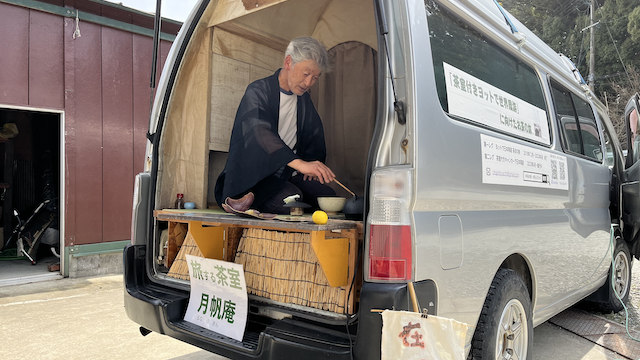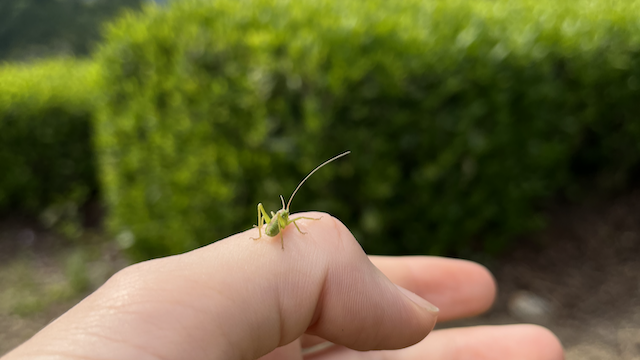2024 April round up
Last month, most farms were busy preparing for the spring season. While now, some farms are still preparing, and some are already in harvest and processing mode...

Welcome to the April round-up newsletter. A monthly letter about everything that has happened inside and outside the tea nursery.
Spring harvest is here!
Last month, most farms were busy preparing for the spring season. While now, some farms are still preparing, and some are already in harvest and processing mode. The early fields have been flushing and starting to be ready for harvest. Although we started harvesting on the 29th of April, many fields are still a few days away, or weeks, from being harvestable. We also had a slight cold spell at the beginning of the month and a day and a half of fast winds. Which partially removed the shades in some fields and damaged most of the buds in those rows of tea. In the image below, the greyed parts are damaged by the shading cover bruising or hitting the buds during the fast wind period.

Recent Activity
This month, I have been focusing on working on the fields. Spring is by far the busiest and most crucial period of the year. Nonetheless, I have been preparing the next cultivar post on Saeakari. At the farm, we have a new field that will be harvested for the first time this year, and I wanted to research more about it. The cultivar is surprisingly well-documented if you know where to search for information. The release papers were challenging to find as they weren't published in the usual directories. It's a more recent cultivar registered at the end of 2012, and according to some research, it's grabbing more and more interest. In Nagasaki prefecture, I found a 2017 research paper exploring the chances of Saeakari taking over Yabukita if the adoption rate keeps trending at the same levels as it did.
This last week in Wazuka, there have been multiple events to celebrate the beginning of the harvest, one of them being the hand-picking and hand-rolling event held by the Wazuka Handrolling Preservation Society. First, we meet in a field prepared for hand-picking for the event and spend a few hours hand-picking some Yabukita. I could sneak a few shots of the Kirari 31 cultivar on the same field. The farmer is growing a new field next to where we did hand-picking. At around 11am, everyone headed back to the Wazuka community space at Wazuka Cha Cafe to see how the members of the Handrolling Preservation Society rolled the tea. The hand-rolling process took until around 4pm. Kenta-san, the president of the Handrolling Preservation Society, happily shared that the tea sold well at the auction a few days later, at 200.000¥ per kg. That's around 2000€ or 1300$ per kg.

Following the Aichi and Shizuoka trip earlier this month, I am still compiling notes I took during the trip. Although I have started writing the article, it will take a bit to be finished. May and early June will be almost exclusively dedicated to working at the farm and resting on the few free times I will have.
At the farm, we also received a visit from Hideaki Hasegawa and his travelling tea room. He has travelled all over the country serving tea from his van/tea room. Hideaki has been featured on the Global Japanese Tea Association's 30 Innovators in Japanese Tea. It was great seeing his creativity in building his fully functional working tea room and his free spirit of wandering around serving people in the most surprising places.
![[418EC403-21DB-43D2-81F6-8367C8283CF7_1_102_a.jpeg]]

What is next
In May, the Saeakari article will be ready to be published. I will keep working on the trip post, but there is no expected time for it to be done. In the meantime, I will be drinking a bunch of teas from the various places we visited, tasting them and finding how, if possible, I could assemble a few discovery packs from the areas I visited. If you are interested, feel free to reach out. I only have teas for a few packs, and it is not the idea of the blog to start selling tea. Travelling around the country and visiting the farmers is a great way to learn more precise information about their teas. I find that a unique educational opportunity, and I want to explore more of those options or have a community brewing session with the people who get those packs, or not necessarily, but would like to hear about the experience.
Now that the heat and humidity are rising, many critters living around the tea fields appear more often than before. I have been thinking about putting together a few articles on pests as well, a bit shorter than the cultivar ones but nonetheless interesting to research.

Books and other fun stuff
This month, I want to share a few interesting articles I read a while ago that made me reflect more on how we think of products. In particular, Matcha, a booming product since a few years back. Thus, you can find a lot of repeated and rehashed information that tries to educate the customers and potential drinkers on the product. At the same time, it encourages a particular view on a product, establishing and legitimising grading systems that don't make much sense depending on the angle you look from. All the following articles are great pieces on Matcha and its grading system. Zach and David's articles, from a business perspective, and Mike's add a historical and marketing point of view.
Zach Mangan. "Ceremonial Matcha: what does it mean?", Kettl Tea Substack
David Lavecchia. "Why "Ceremonial Grade" is Meaningless", Tezumi
Mike Newton. "Behind Ceremonial Grade: Exposing 130 Years of Tea History", The Tea Letter
Mike Newton. "Mind Over Matcha: The Battle Against Consumer Misconceptions", The Tea Letter
That is it for this month. As always, you can help the blog by sharing this newsletter or any of the blog posts and sharing it with a friend or family member who could enjoy it.
